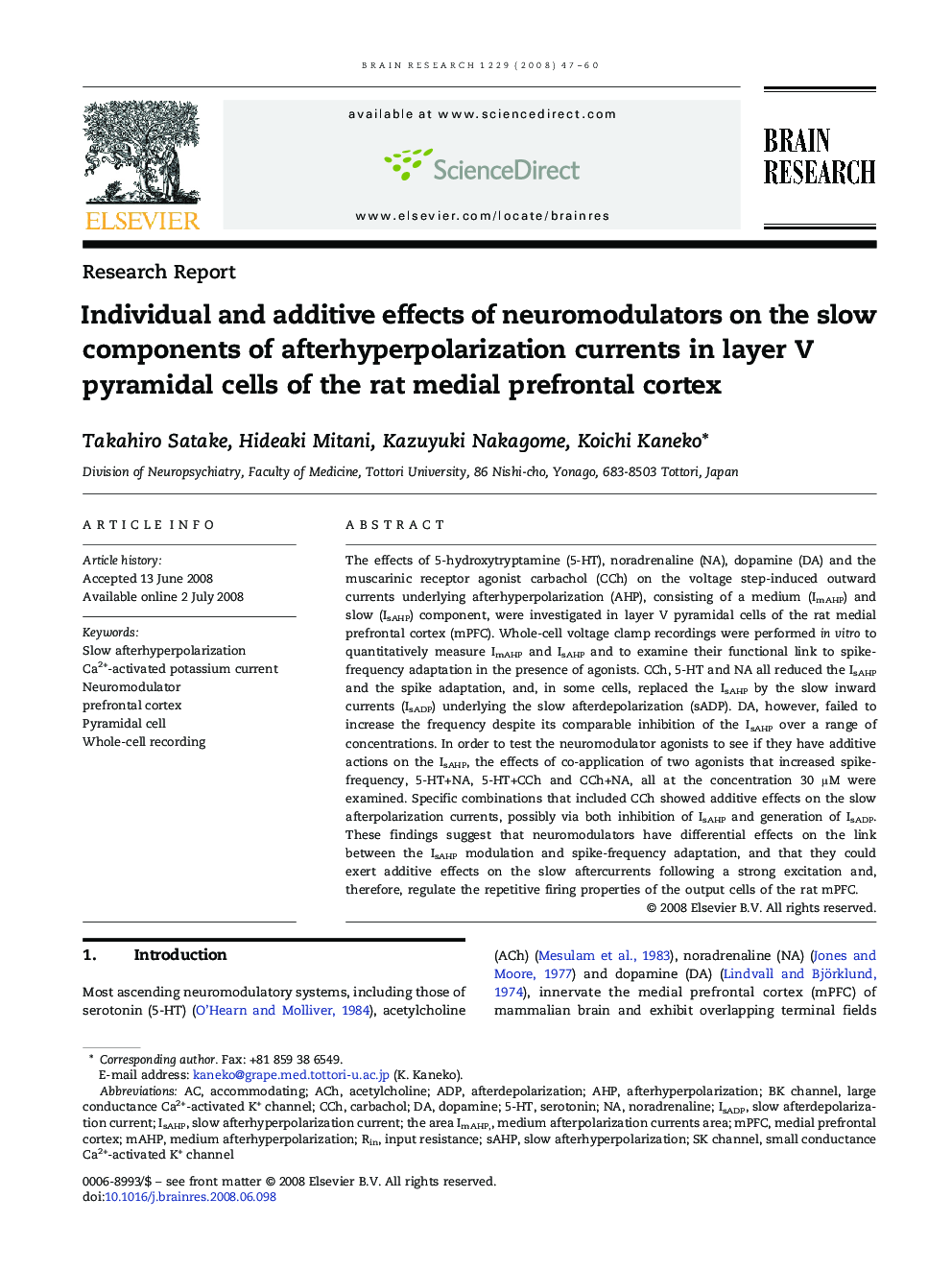| Article ID | Journal | Published Year | Pages | File Type |
|---|---|---|---|---|
| 4329360 | Brain Research | 2008 | 14 Pages |
The effects of 5-hydroxytryptamine (5-HT), noradrenaline (NA), dopamine (DA) and the muscarinic receptor agonist carbachol (CCh) on the voltage step-induced outward currents underlying afterhyperpolarization (AHP), consisting of a medium (ImAHP) and slow (IsAHP) component, were investigated in layer V pyramidal cells of the rat medial prefrontal cortex (mPFC). Whole-cell voltage clamp recordings were performed in vitro to quantitatively measure ImAHP and IsAHP and to examine their functional link to spike-frequency adaptation in the presence of agonists. CCh, 5-HT and NA all reduced the IsAHP and the spike adaptation, and, in some cells, replaced the IsAHP by the slow inward currents (IsADP) underlying the slow afterdepolarization (sADP). DA, however, failed to increase the frequency despite its comparable inhibition of the IsAHP over a range of concentrations. In order to test the neuromodulator agonists to see if they have additive actions on the IsAHP, the effects of co-application of two agonists that increased spike-frequency, 5-HT+NA, 5-HT+CCh and CCh+NA, all at the concentration 30 μM were examined. Specific combinations that included CCh showed additive effects on the slow afterpolarization currents, possibly via both inhibition of IsAHP and generation of IsADP. These findings suggest that neuromodulators have differential effects on the link between the IsAHP modulation and spike-frequency adaptation, and that they could exert additive effects on the slow aftercurrents following a strong excitation and, therefore, regulate the repetitive firing properties of the output cells of the rat mPFC.
